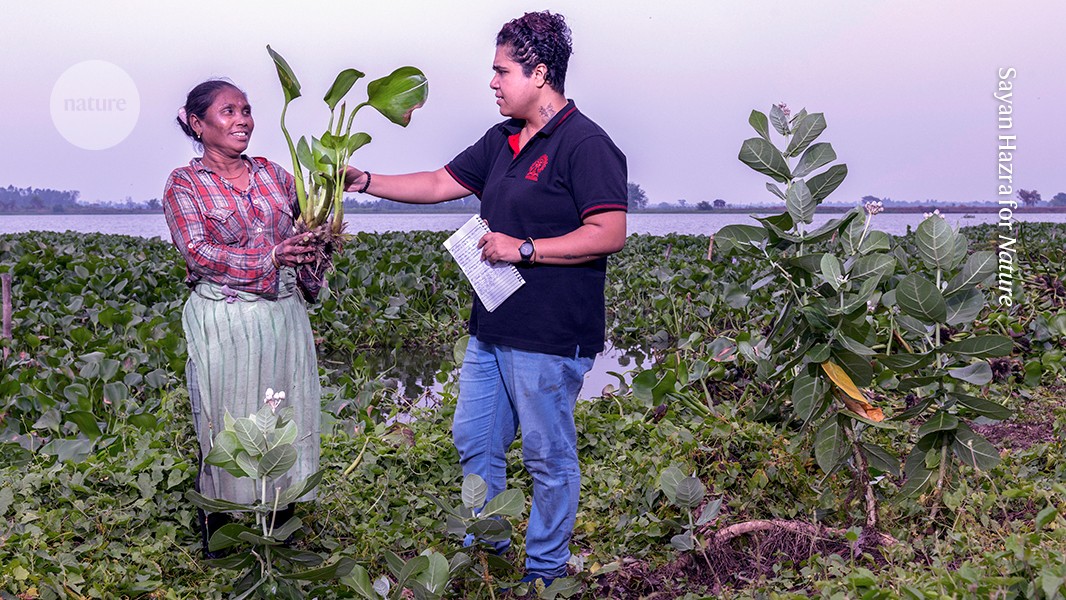
"In this photo, I'm standing in a sewage-fed pond in the East Kolkata Wetlands in India. These wetlands span 125 square kilometres and treat nearly 80% of the city's waste water naturally. Every day, they recycle 750 million litres of waste water and produce 22 tonnes of fish and 150 tonnes of vegetables. There are 254 sewage-fed ponds in the wetlands, and each has its own dynamic in terms of size, ownership and ecology."
"This one is owned by a cooperative, in which the profits are shared equally among the members. Here, I'm standing with a fisherwoman who helps to clean and maintain the pond, in part by removing plants such as the water hyacinth ( Pontederia crassipes) that she's holding. Although water hyacinths absorb toxic metals, provide shelter for fish and prevent soil erosion, having too many of them can harm the pond."
East Kolkata Wetlands cover 125 square kilometres and naturally treat nearly 80% of the city's waste water. The wetlands recycle 750 million litres of waste water daily and produce about 22 tonnes of fish and 150 tonnes of vegetables each day. The system comprises 254 sewage-fed ponds, each with distinct size, ownership and ecological dynamics. One pond is owned by a cooperative that shares profits equally among members. Fishers maintain ponds by removing plants such as the water hyacinth ( Pontederia crassipes); the plant absorbs toxic metals, provides fish shelter and prevents erosion, but overabundance can harm pond ecology. Historical research reconstructed a 250-year canal history starting in 2007 and notes British selection of Kolkata for development based on location, ecology and terrain.
Read at Nature
Unable to calculate read time
Collection
[
|
...
]